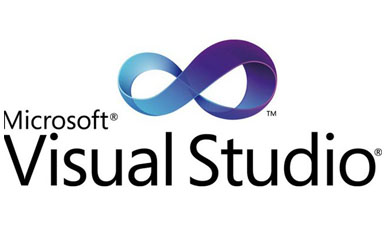
Module 1 – Introducing the Microsoft Visual Studio family
- What’s new in Visual Studio
- Overview of the Visual Studio family
- Overview of product features
- A lap around Visual Studio Team Services
- Project workflow across the Visual Studio suite of products
Module 2 – Planning a TFS 2018 Deployment
- Overview of TFS architecture
- Planning a TFS deployment
- An overview of product licensing
- SharePoint and Project Server integration
Module 3 – Installing TFS
- Installing and configuring TFS prerequisites
- TFS installation
- Installing Code Search
- Optimising your Code Search deployment
Module 4 – Upgrading to TFS 2018
- Understanding upgrades and updates
- In-place vs migration-based upgrades
- Performing your upgrade
Module 5 – Managing TFS Instances
- Using the TFS Administration Console
- Configuring SMTP support for TFS
- TFS server health monitoring
- Changing service accounts
- Viewing installed updates
Module 6 – TFS Backup and Restore
- TFS Backup and Restore strategies
- Understanding the TFS databases
- Creating a backup schedule
- The restore process
- Refreshing the client data cache
Module 7 – Creating and Managing Team Projects
- Planning your projects and collections
- Creating Team Project Collections
- Creating Team Projects
- Creating Project Welcome pages
- Renaming and deleting Team Projects
Module 8 – Configuring Team Project Level Security
- Overview of TFS security
- Configuring security using standard groups
- Setting user access levels for your server
- Understanding and configuring Teams
Module 9 – Advanced Security and Permissions
- Fine-grain security options
- TFS server level permissions
- Setting permissions at the Team Project Collection level
- Restricting access in TFS
- Using command line tools for managing security
Module 10 – Source Control Configuration
- Setting project-wide source control settings
- Understanding workspaces
- Using the TFS command line utility
- Using the TFS Rollback command
- Using the TFS Proxy to improve performance
- Backward compatibility using the MSSCCI provider
Module 11 – Installing and managing extensions
- Introducing the Visual Studio Marketplace
- Installing extensions from the Marketplace
- Managing extension requests
- Paid extensions and understanding billing
Module 12 – Work Items
- Overview of work items
- Creating custom queries
- Work item charting and pinning charts
- Work item tagging
- Configuring and managing notifications
Module 13 – Managing Process Templates
- Understanding process templates
- Basics of template customisation
- Adding new fields to Work Item Types
- Updating forms for new and legacy clients
- Updating an upgraded Team Project
Module 14 – Reporting
- Understanding the reporting architecture
- Adding new reports
- Creating ad-hoc reports using Excel
- TFS Warehouse and OLAP Cube overview
- Changing the Data Warehouse and Analysis Services Cube processing frequency
- Rebuild the Data Warehouse and Analysis Services Cube
Module 15 – Configuring build and release infrastructure
- Overview of build and release infrastructure
- Creating agent pools and queues
- Installing and configuring agents
- Scaling your agent pool infrastructure
- Overview of non-Windows agents
This course is designed for administrators and software development professionals responsible for the day-to-day administration and operation of a Team Foundation Server. Every organisation using TFS should have at least one or two “TFS champions” who are skilled in the topics and areas covered in this course.
Attendees should have some familiarity with installations of server products such as operating systems, SQL server, etc. Some experience using Visual Studio would also be beneficial.
At the completion of this course, attendees will be able to:
- Plan your TFS deployment and install TFS 2018 in a variety of topologies
- Determine appropriate service accounts
- Plan a migration and/or upgrade to TFS 2018
- Understand the value of quarterly updates and how to install them
- Install, configure, and optimize the Code Search feature
- Troubleshoot issues with Code Search
- Configure SMTP support and customise email alerts
- Install extensions from the Visual Studio Marketplace
- Keep your TFS data safe using backup and restore
- Monitor the health and performance of your TFS server
- Plan your project hierarchies using Team Projects and Team Project Collections
- Create, modify, rename, and delete Team Projects and Team Project Collections
- Configure standard role-based security for team projects
- Use advanced security to manage fine-grained security
- Configure version control settings, including backward compatibility
- Customise the process template to better suit your teams’ requirements
- Understand the reporting infrastructure and create custom Excel reports
- Configure Data warehouse and OLAP cube refresh and rebuilds
- Plan, install, and manage the new build environments
- Optimise build infrastructure to provide fast feedback to teams
- Configure a release management environment
- Manage configuration values in release management
